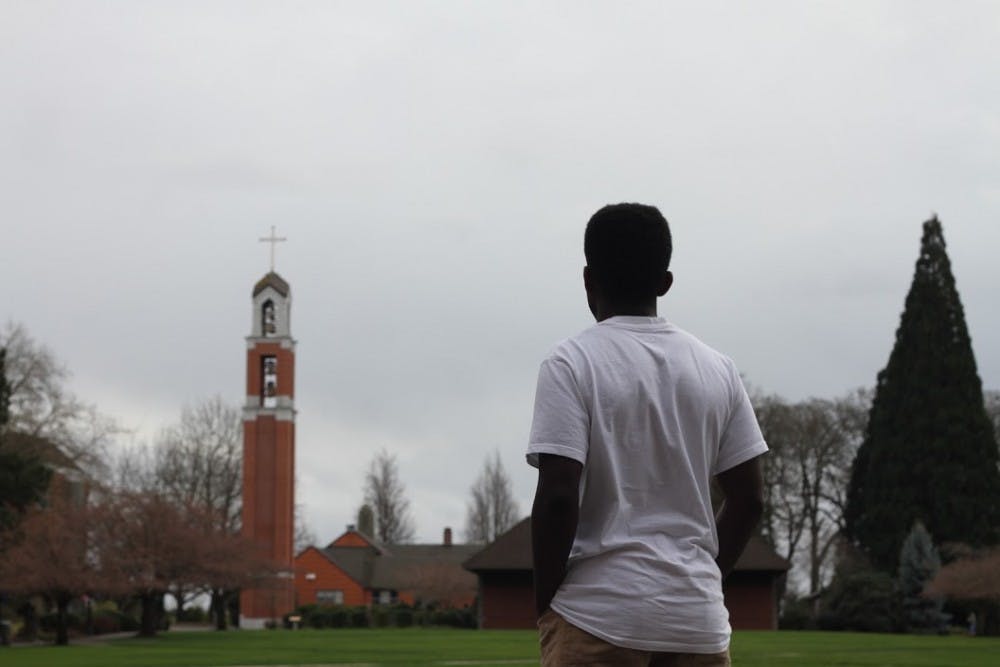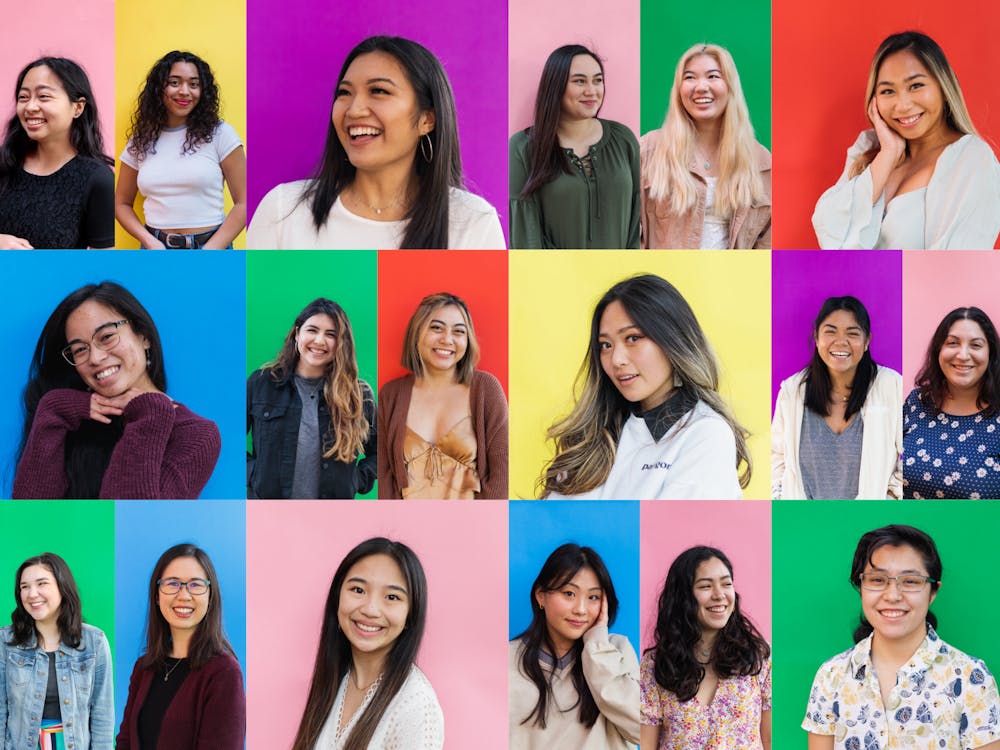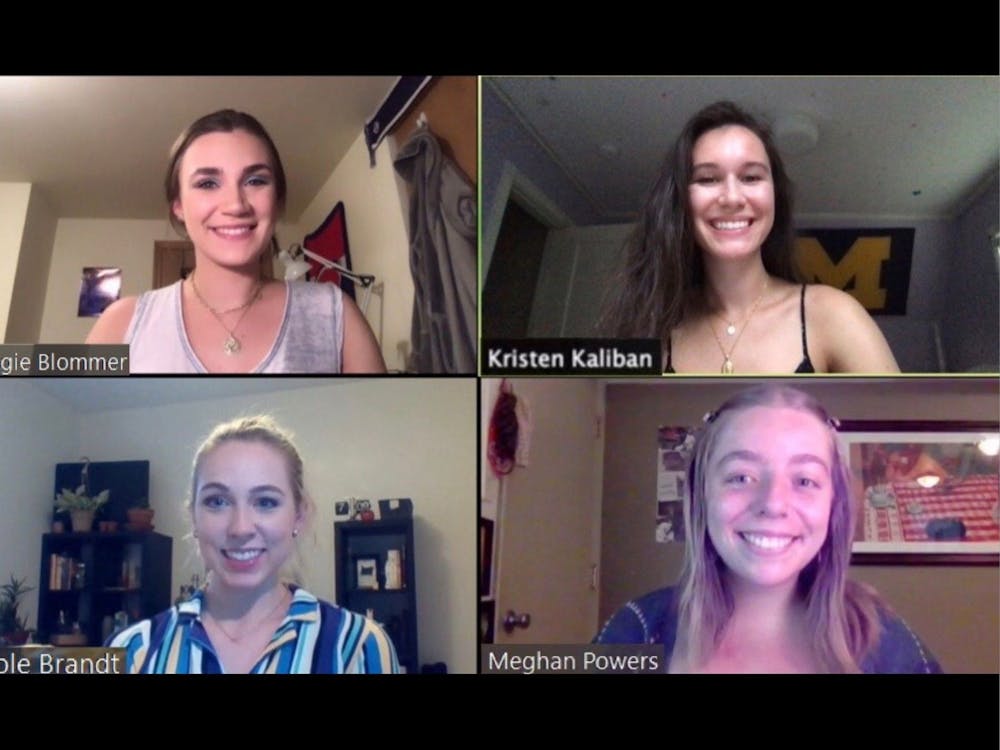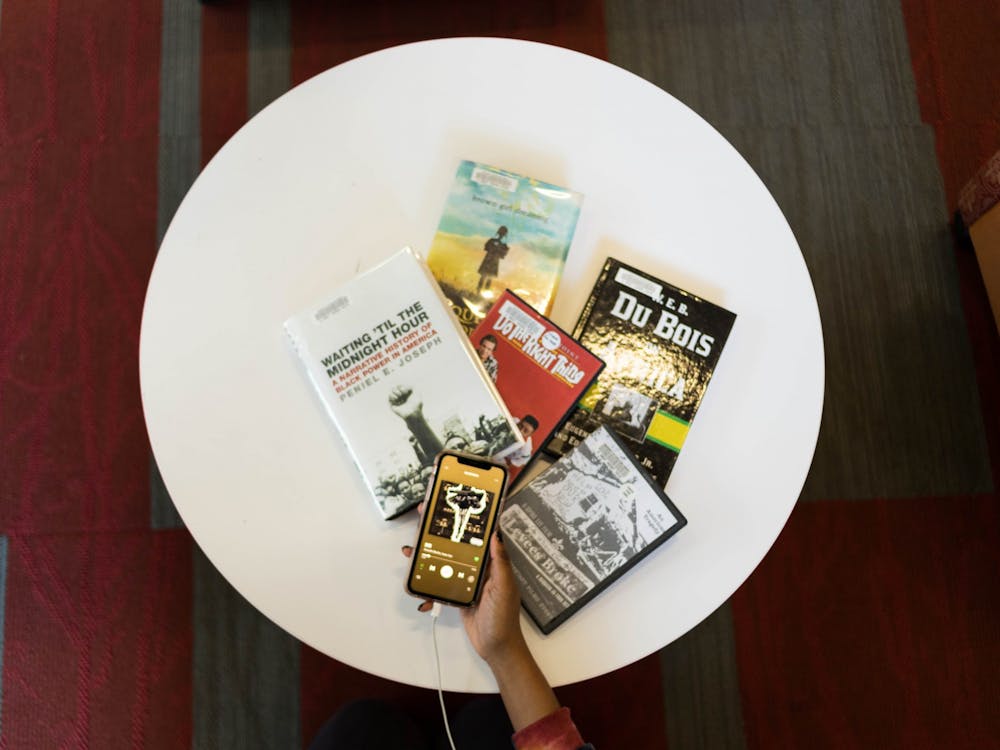According to U.S. Census data, the United States is 13.2 percent black, Portland is 6.3 percent black and the state of Oregon is two percent black. As a result, fewer blacks living in Oregon means fewer blacks going to college in Oregon compared to California and other more diverse states.
UP’s population has increased over the past 10 years but the percentage of African-American students has stayed the same.
“When I look around campus in general, no, it’s not diverse,” Osman said.
The concoction is complex. The combination of race, class and Oregon’s historical racism creates the perfect storm for Oregon colleges to be dominated by whites. This is not unique to The Bluff.
The University of Oregon lists 327 out of 23,903 undergraduate students — 1.3 percent of the student body — as black. Portland State is 3.2 percent black.
The price tag that comes along with a semester at the University of Portland also contributes to keeping minority groups out.
The United States Census Bureau reported that in 2014, the median income of non-Hispanic, white households was $60,256, whereas the median income of black households was $35,398. According to the National Center for Education Statistics, 99 percent of UP students received institutional financial aid for the 2014-15 school year. Still, black students’ families are less likely to be able to afford the University’s $50,000 annual price tag.
“I think it deters a lot of people from coming here,” Osman said. “A lot of us, even me, come from low socioeconomic status, and most of our parents aren’t college educated.”
Still, some more expensive schools have higher percentages of black students. For example, Loyola Marymount University in Los Angeles is almost seven percent black, yet tuition is higher.
It is not uncommon for a class of 30 students to have only one black student, or none at all. Junior Gat Bol said this makes him feel out of place and unwelcome. He says he often has trouble connecting to his white peers.
“When we’re in class learning about different subjects or different topics, I’m always the one that can’t really relate,” Bol said.
Bol is originally from South Sudan and moved to the United States when he was five. He is constantly forced to make the distinction between being “African” and “African-American,” and he struggles to convey what it’s like at home to his fellow students.
“Everyone has this ideal ‘African’ in their head from TV and the media portraying Africa as a lonely place that you can’t come out of,” Bol said. “Like you can’t succeed.”
He said that in the classroom, the cultural differences between him and his white classmates become impossible to ignore.
“I feel like everyone has watched different movies than I have, read different books,” Bol said. “They’ve just seen a different side of the world that I haven’t experienced too much. I feel like I can’t contribute or say anything. I look like an idiot because I don’t know what I’m talking about. I’ll say something and no one will be able to relate to it.”
Fewer blacks in college means those who do attend face pressure from both whites and blacks.
“Everyone thinks I sound white,” Bol said. “When I was younger, I was told that I’m a white guy stuck in a black man’s body.”
In Bol’s experience, being well-spoken, smart and quick-thinking have become traits reserved for white people.
Junior Danielle Dillard, who is biracial with a black father and white mother, said that she has been warned since she was a child that because she was half-black, half-white and well-educated, others would try to place her in boxes and tell her that she is white because of the way she speaks.
She remembers her older sister telling her not to let friends call her white. At the time, she didn’t understand why.
“She was like, ‘They say you act white and why? Because you’re educated? Because you can speak properly makes you white? That’s a horrible thing to say,’” Dillard recalls. “And she’s right.”
Basketball stereotypes
Popular culture tends to suggest that young black males have two career paths: professional sports and rap music. For many black athletes, sports are a gateway to a college education.
In the 2014-2015 season, the NCAA reported that 58 percent of Division I men’s basketball players were black. Fifty percent of the men’s basketball team at UP is black, a figure that is totally disproportionate to the overall student body.
For many black students on the team, playing basketball was their only ticket to college, let alone an expensive, private university.
Junior point guard Alec Wintering came from a single-parent household and his family struggled with poverty throughout his childhood.
“If I wasn’t playing basketball, I honestly don’t know if I could go to college or not,” Wintering said.
Wintering isn’t alone. Other black players echoed this sentiment. In addition to full-ride academic scholarships, most players also have their books, meal plans and housing covered.
“I feel like basketball is an opening to get to where you want to go, so we use it to our advantage,” Jackson said. “We wouldn’t be able to go to college without playing basketball. Money reasons.”
Still, UP’s black players said they felt there was some expectation that playing basketball is what they are supposed to do. People make assumptions that because they are black and because they are tall, they should automatically be good at basketball.
What’s more, Jackson, originally from Bakersfield, California, believes white players receive more praise from coaches when they play well compared to black players.
“They expect Alec to be good (because he’s) black,” Jackson said. “If someone white on our team was like Alec, he would get a lot more praise. But since Alec is black, they (are) like, ‘He is black. He’s supposed to be good.’”
Freshman Jazz Johnson thinks that not only are black players expected to perform better on the court compared to white players, but their conduct is scrutinized more.
“I feel like I am held to a higher standard than, say, (Jason) Todd,” Johnson said. “ I feel like I have to prove myself that much more than say, Phil (Hartwich).”
You can't make mistakes
Some warnings for black children are whispered, some screamed. Be respectful when talking to police. Keep your hands where they are visible. Don’t walk late at night with your hood up: You do not have the luxury to make the same mistakes as your white counterparts.
Look around on a Friday night and it’s not uncommon to see students making their way down Willamette in a group of 10 friends, singing, laughing, shouting, backpacks full of beer clinking with their steps, hoods up to protect themselves from the rain.
That is a white privilege.
Black children are taught from a young age to be untrusting of the white world around them. Tread lightly. Be careful. You will be judged, on first glance, just by the color of your skin.
Osman said he remembers attending a summer camp where they had a two-hour segment dedicated to telling children of color how policemen would treat them differently.
“You have to say ‘Yes, sir,’” Osman said. “Don’t expect an apology ...You grow up looking at cops thinking, ‘Oh, they are heroes, they save the world.’ And then you go to this class as a sixth grader and it’s like, ‘No, you’re black.’”
Johnson grew up hearing similar warnings from his dad.
“My dad always told me, ‘You have to be that much better than a white person because if you are even somewhat equal, they’re going to get the upper hand over you.’”
There are worse consequences when you don’t follow those rules.
Dillard was in seventh grade when she was called a “black bitch” for making the wrong comment at a birthday party.
“There was no reason to call me that,” Dillard said.
Wintering was a junior in high school when he was pulled aside and threatened by the dean of his school, who warned him that although he hadn’t done anything wrong yet, they would catch him in the wrong place at the wrong time.
“That’s not a way to be a high school junior ... having to worry about stuff like that,” Wintering said. “So I changed schools.”
Bol feels intrinsically motivated to hold himself to a higher standard than his peers. He believes that if he failed, it would simply reinforce the low expectations placed on black people.
“If I mess up, I think it looks worse or typical,” Bol said. “If I were to drop out of school, everyone would be like, ‘Oh OK, it happens.’ My margin for error is thinner than most people.”
Every person of color has a story. UP has become a safe bubble, a bubble where violent racism is rare. Many students report that on a peer-to-peer level, they feel that the UP community is welcoming.
There isn’t a lack of support from the white community here at UP. But black students say they feel others don’t realize their constant struggles.
“(White people) can see how we react to things but they don’t understand what goes through our mind,” Johnson said. “How actually terrified we are to walk down the street knowing that you can just get pulled over for no reason, just because you’re black. I don’t think white people really understand we’re more scared than anything because we get treated differently and we know some bad things can happen to us just because of the color of our skin.”
But in a white world, with a white system, most students have adopted a “That’s just how it is” attitude.
“It is what it is,” Jackson said. “It’s not going to change anytime soon.”
Although UP is making mention of increasing diversity and making an effort to hire more minority staff and faculty members in the new five-year plan, Vision 2020, students want to see more direct action.
“It feels hopeless,” Dillard said. “Sometimes you just want to cry. It’s not just being black. It’s being colored in general. It sucks.”
'African Americans aren't celebrated here'
Black students notice that the University does not observe Martin Luther King Jr. Day.
Black students notice that the faculty affiliated with the Black Student Union are white.
Black students notice that their professors almost never look like them.
“I think those things, they aren’t racism,” Osman said. “But I think there is something to be said there, that those things that are critical to African-Americans aren’t celebrated here.”
This doesn’t only happen on The Bluff, but is built into higher education. According to the stereotypes, blacks go on to be rappers and NBA players, not doctors or engineers.
“The media doesn’t show black people that are succeeding in other fields,” Bol said. “But you’ll see white people doing other things.”
When black professors are standing in the front of classrooms in Franz, when black priests have offices in Waldschmidt Hall and when black students are one in 10 as opposed to one in 95 then, black students say, they will feel included.
“They want to talk about being diverse but they don’t take the steps to actually be diverse,” Wintering said. “Like, I’m sure that if they actually brought in more black staff, we’d get more people of color. But they’re not gonna do that.”





